Cleaning your eyelids daily can help manage dry eyes by removing excess oil, debris, and bacteria that can clog the meibomian glands and reduce tear quality. At Red Deer Eye Care, we can help you manage your dry eyes by relieving your symptoms and protecting your eye health.
Regular eye exams also play an important role in diagnosing dry eye early, before it can cause further issues.
What is Dry Eye Disease?
Dry eye disease occurs when your eyes don’t produce enough tears or when your tears evaporate too quickly to keep them lubricated. Tears are needed for clear vision and comfort, as they wash away debris, reduce infection risk, and keep the surface of your eyes smooth.
The tear film has three layers—oil, water, and mucus. When any of these layers is disrupted, irritation and inflammation can develop. The meibomian glands along the eyelids produce the oil layer, which prevents tears from drying too quickly.
What Causes Dry Eyes?
There are several common primary causes of dry eyes. The root cause of a given case typically affects how the optometrist treats them.
Inadequate Tear Production
Inadequate tear production is a major cause of dry eyes. It can arise for a few different reasons:
- Age: As we get older, our eyes often produce a lower volume of tears.
- Underlying medical conditions: Certain underlying conditions like rheumatoid arthritis, lupus, or thyroid disorders can affect your tear production.
- Medications: Many common over-the-counter (OTC) or prescription medications can also affect your tear production.
- Other factors: Several other factors like contact lens use or eye surgery can contribute to dry eyes. Often these things cause short-term dry eye symptoms.
Excessive Tear Evaporation
Even if your eyes produce enough tears, you’ll experience dry eye symptoms if they evaporate too quickly. Here are several things that can contribute to excessive tear evaporation:
- Not blinking enough
- Abnormal eyelid function
- Allergies
- Sensitivity to preservatives in eye drops
- Posterior blepharitis
- Environmental factors like smoke and dry air
Risk Factors for Dry Eye Disease
Several lifestyle and health factors can increase your likelihood of developing dry eyes.
Lifestyle Causes
- Screen time: Extended computer use, smartphone scrolling, and watching television can reduce your blink rate.
- Contact lenses: Long-term contact lens wear can disrupt the tear film and reduce tear production.
- Environment: Air conditioning, heating systems, wind, and dry climates can accelerate tear evaporation.
Health Conditions That Increase Risk
- Diabetes: High blood sugar levels can damage the nerves that control tear production and affect the quality of your tears.
- Thyroid disorders: Both overactive and underactive thyroid conditions can impact tear production and eyelid function.
- Autoimmune conditions: Conditions like Sjögren’s syndrome, rheumatoid arthritis, and lupus specifically target the glands that produce tears and saliva.

How Eye Exams Can Help Detect Dry Eye Early
Regular eye examinations play an important role in identifying and managing dry eye disease before symptoms become severe or interfere with your quality of life.
The Link Between Eye Exams & Dry Eye Diagnosis
During a comprehensive eye exam, your optometrist can assess tear film quality, measure tear production, and check the health of your meibomian glands. Tests such as the Schirmer test and tear break-up time help evaluate tear volume and evaporation.
By examining your eyelids under magnification, your optometrist can detect meibomian gland dysfunction, a common cause of evaporative dry eye. Early detection makes treatment more effective and helps prevent the condition from worsening.
Preventing Long-Term Complications
When left untreated, chronic dry eye can lead to corneal damage, increased risk of eye infections, and difficulty performing daily activities like reading or driving. Regular monitoring allows your eye care professional to adjust treatments as needed and prevent these complications from developing.
Dry Eye Treatment Options
Luckily, there are a few different ways to help treat dry eye symptoms at home. It’s also recommended to see an optometrist and confirm that there are no underlying causes for your dry eyes.
Cleaning Eyelids
Posterior blepharitis, a common cause of dry eyes, can often be managed with regular eyelid cleaning. The goal is to unclog oil glands and restore proper flow. Place a warm, damp cloth over your closed eyes for about 5 minutes, reheating as needed. Gently massage your eyelids and lashes to loosen debris, then wash the area with a small amount of mild soap or cleanser and rinse well.
You can also use specially formulated eyelid wipes, which are designed to safely and effectively remove oils and buildup around the eyes.
Over-The-Counter (OTC) Options
There are a few nonprescription options available that you can use for mild or nonpersistent symptoms:
- Eyedrops: Choose a preservative-free eyedrop if you need to use them several times a day.
- Gels: These provide longer-lasting relief than regular drops, but may temporarily blur vision.
- Ointments: Ointments can provide a longer and more effective relief than eye drops or gels. However, they are also thicker and can cause your vision to be blurry.
Medical Treatments
If home remedies aren’t working, there are several treatments and therapies available that your optometrist can administer.
How to Prevent Dry Eyes Daily
Simple daily habits can go a long way in keeping your eyes comfortable:
- Stay hydrated: Aim for at least 8 glasses of water a day.
- Use a humidifier: Add moisture indoors, especially in winter.
- Blink often: Make a conscious effort, particularly during screen time.
- Follow the 20-20-20 rule: Every 20 minutes, look 20 feet away for 20 seconds.
- Adjust your workspace: Keep screens slightly below eye level with good lighting.
Making these habits part of your routine can help reduce irritation and keep your eyes healthier every day.
Taking Control of Your Eye Comfort
Cleaning your eyelids is often a successful treatment for dry eyes. However, if you’ve tried it and your over-the-counter eye drops aren’t giving you the relief you need, give our team at Red Deer Eye Care a call. We’re happy to book you in so that one of our optometrists can help relieve your eye discomfort as soon as possible.



